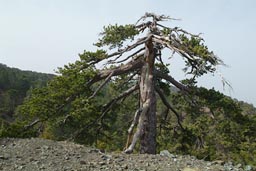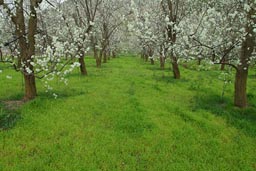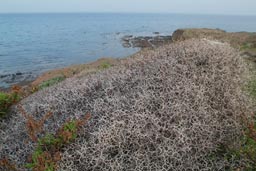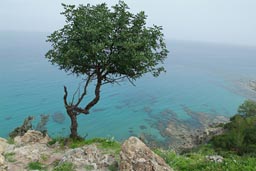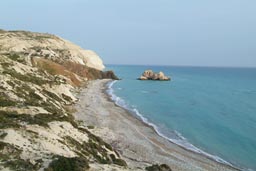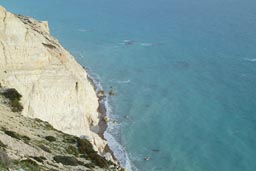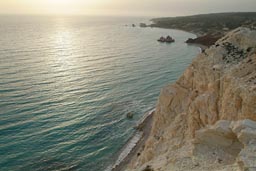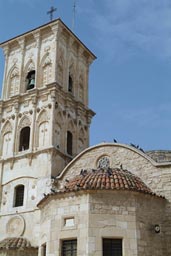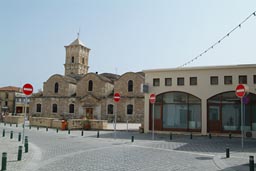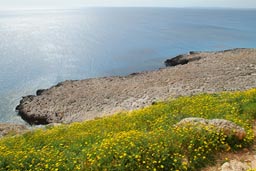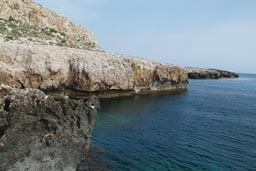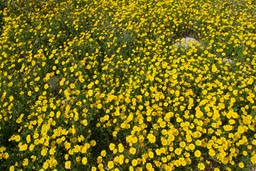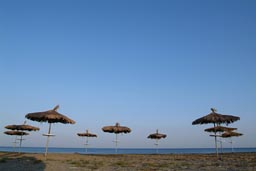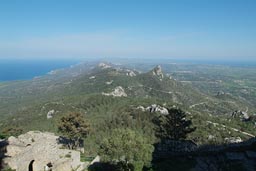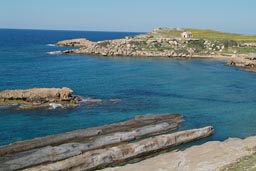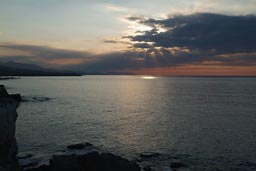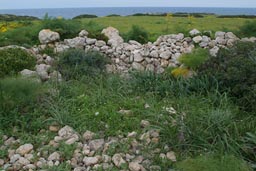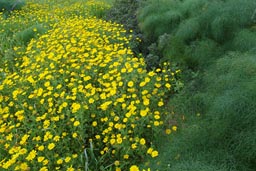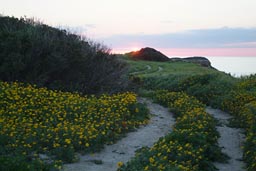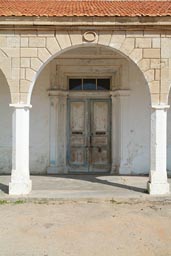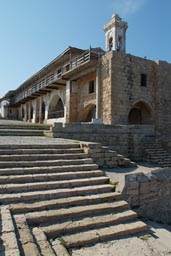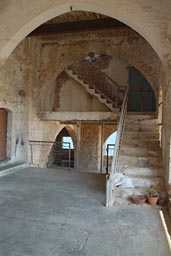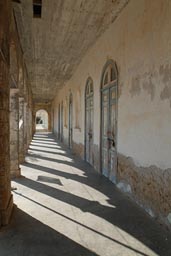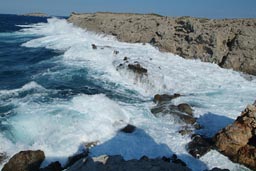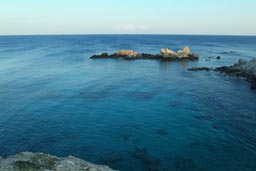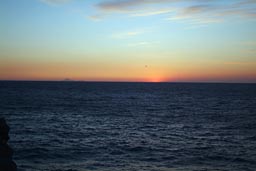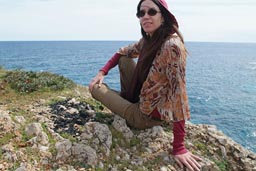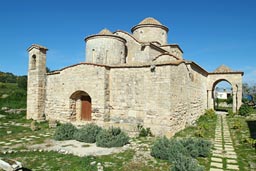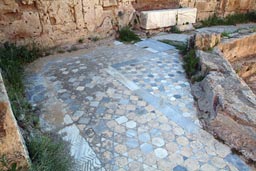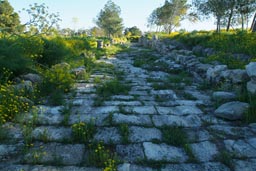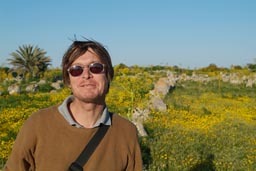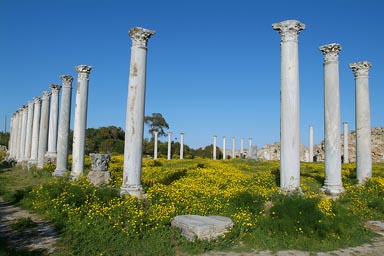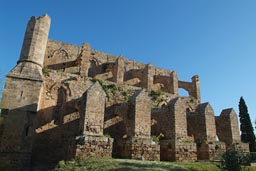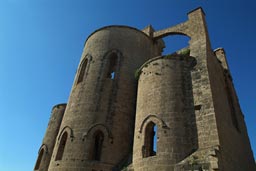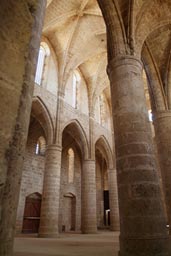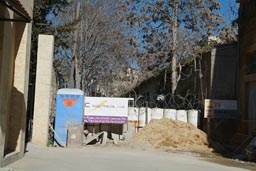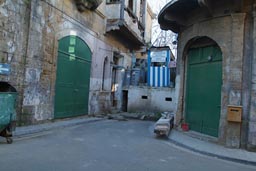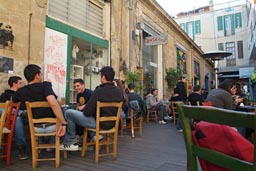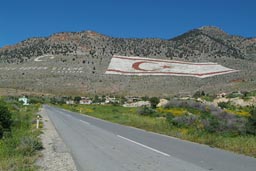www.thisfabtrek.com > journey > europe > cyprus > 20100322-kyrenia
Scandalous, divided in Europe.
Download GPS (KML) track/waypoints.
Well, well I am getting a bit bored by my own writing.
I escape the 30 hours on board the ferry which was a cargo boat and the subsequent port struggle, the efforts by Salamis shipping company to extract even more money off me, in a way it all keeps me from realising where I am, back in old Europe. Like back from outer space I need dozens of Guinness and truly dark red and heavy Cypriot wine to help linger the effects of re-entry.
So here I am in Limassol, this is Greek, religious; every clerk in the port wears a cross around his/her neck, any office is decorated by dozens of Virgin Mary icons. So after my first oil change, really since Istanbul, after 20,000 km, I fix the radio, the horn, the lights, I drive out, north. No idea where to go I enter the Troodos forest and Mount Olympos (1800m), all is pines and cedars, the vivid winds carry the essences with them, the pines are spliced, cracked by the storms as much more vivid winds are common here.
Down from the heights on the northern still Greek side, has monasteries in any other valley, Kykkou and others, is religious country, olive and fruit trees take over, gardens of cherries in full blossom, this is a hazy afternoon, this is Thursday 11th of March, one week after I left Christina on the Jordan bridge, my hangover still hurts.
Morning is better, go around the coast west that is battered with the so common luxury department blocks, marketed to the British. But out of season all is quiet, a relaxed coffee in Polis which at this time of the year is virtually tourist free. Still hazy I go for a walk on the peninsula of Akamas, the only left to its own reserve on the coast, Aphrodite’s bath, Adonis’s walk, all is well marketed, sun is hot behind the haze, bees hum, the pastures are in full yellow and purple blossom, little lizards escape into the under grass on every one of my steps, the path is well trodden, every bush, every tree has its biological/Latin name attached on a sign. The ocean hazy to my right, 5 km, I turn land inward, uphill, a further 2km, then turn right back on the mountain ridge, ridge of the peninsula, a constant ascent, the little lizards hurdle away when I approach, once on top at 385m the view is mine. Down, back after 13km, nice quick, I buy 8 freshly picked oranges for 1 Euro, picked in middle of March, everywhere in Cyprus.
The Greek Southern coast of Cyprus is pretty much in Spanish dire straits, means fully developed, with yet another luxury villas agglomeration, another holiday apartments development brought to you by this and that, biggest fastest, proud to present Cyprus-vulture, you know.
In Pafos I do not even stop. I stop at Aphrodite’s birthplace (well marketed, see!) and a hazy sundown over turquoise waters reflected in the white of the cliffs of Petra tou Romiou, Rock of the Greek. Next morning back in Limassol I realise I am not so interested anymore in antic Roman/Greek ruins, seen a lot of that recently. Still not sure what I can find in Cyprus I continue to Larnaca, which then is all English and Pub, Fish and Chips and Burgers, the morning after a greasy spoon, full English breakfast. Larnaca is all Football and Rugby bars, "Come on Wales! and "Come on Manchester! Essex lingo is as common as Greek, Guinness follows Guinness, we are only 4 days away from St. Patrick’s Day, partying and drinking, I can do that. Later past midnight, the crowded back alleys are full of loud music bars and youngsters on a Saturday night roll. When I settle for a last small Keo beer, some caring guy, Chrysanthos, Greek Cypriot, out with a group, puts tequila, then another one in front of me, I can do that, I like tequila, then, I think I must have passed out.
Sunday morning, St. Lazarus church service is broadcasted on outside speakers, like the mosques do on Fridays. There is a mosque in Larnaca, a stone throw away from Lazarus and the English drinking spots, what does the devout Muslim think?
I go for another walk on the Akrotirio Gkreko, most eastern cape on the Greek side. Another tiny nature reserve, limestone escarpments, the wind blows, moves the weeds, I can hear it; this is where my god lives, not in a church, not in a mosque. Again these fields of wild flowers (yellow Bugloss?), blinding to the eye, drugging the senses, the little lizards swiftly make it to the under grass. But it is the smallest nature refuge/reserve I have ever seen. Two kilometres away huge billboards advertise for yet another luxury 3 bed room apartments development, brought to you by Famagusta developers. Famagusta is the district.
"Give us Famagusta back! (the city, a bit north, since 1974 Ghost city, in no-man’s land) they (British/Greek) have cried this week. The developers are rubbing their hands, preparing for the day of reunification with Turkish North, constant lobbying, shaping opinion, influence the press, Greeks have as much blame to bear as Turks for the current status quo of Cyprus-island (read wiki on the Cyprus conflict).
However in light of what they, the concrete and Caterpillar people have done to the southern Cypriot coast one wants to pray that for the sake of Nature unification may never happen.
At this stage I still have to go and see the North; so-far the South has shown me only so much of nature; I have a feeling the North is where I want to go.
Monday, afternoon on the beach in Larnaca near the airport, finally around 5 the haze clears, I watch the planes land, Christina arrives from Amman and we go north, pass Nicosia/Lefkosia the border is easy going, hostilities have abated, all is relaxed, straight to Kyrenia/Girne on the northern coast, the maybe nicest town on Cyprus. Turkish is spoken, Turkish food everywhere, Greek Cypriot wines have disappeared from the shelves, but Efes beer and Raki, and obviously Turkish wine from Thrace are sold on every corner. Turkish Cyprus is certainly Muslim but certainly not conservative. One single, beautiful, so distinct Turkish, al-Maghrib prayer call is heard and then later after dark another (single) one, instead of the tens and hundreds that mingle normally in Muslim countries. Not a single woman with a headscarf crosses our path in Kyrenia. Instead the so common Atatürk statues and two flags (Turkish and Turkish Northern Cypriot) point to an almost militant secularism. (One wonders what Atatürk has to do with the Cypriot civil war, apart from that he symbolises Turkish greatness.)
Coming to the Turkish (northern) part of the island, the same surprise happens as had happened when I crossed from Israel to Palestine. The country almost instantaneously becomes beautiful. Gone are the concrete superstructures, the large scale projects, the bulldozer destructions. Just pleasant, natural growth, terrain is just left on its own; to nature.
Setting out on the northern coast eastwards, camp on the sea, the haze is back, Kantara castle, from Crusaders times, has a wonderful view to the eastern end, still some 80 km away, but we can see the converging seas. Up here it’s again pines, cedars and olive trees and little lizards on every step escaping in the under woods. Already afternoon down at the coast we set up camp again atop the cliffs amidst beds of wildflowers, a cyan-blue ocean underneath. Some settlement/village had been here, first we see a church served maybe as a mosque, elsewhere stone walls are visible, overgrown by bushes, also some rock had been chiselled away from the cliff’s top, some parts of the escarpment had fallen into the ocean, taking whole parts of the village with it, some Ottoman building stands in the back near a natural harbour. We find lots of pottery, fragments of jars, handles; some places show clear signs of digging, by individuals, plunderers. The little lizards unimpressed hurdle away as swift as ever.
Evening is calm, sun sets behind the next weather formation on its move in. Morning is cold, very stormy; overnight the calm sea mutated into a monster. We drive all the way out to the cape, Akrotirio Apostolos Andrea, there, Andrea Monastery seems shut, though partly rebuilt, a sign says stabilised by USAID funds, so maybe times are improving and Christian buildings are being maintained again. A wild donkey reserve spreads over the whole of the cape.
The cape is stormy with huge waves pounding the limestone rocks from the north, in the lee on the southern side of the long eastern finger of Cyprus the sea is calmer, the cliffs steeper, nature rougher, and donkeys bleat all night.
The North, the farthest eastern point where the sun rises is where I wanted to go, I expected healthy nature and I found the beauty, in wide stretches the untouched wilderness; on this clear morning as the sun rises one can even see the Syrian mountains, some 80 kilometres away.
But this is the thing, when the whole of the South Cypriot (Greek) coast, spare a few kilometres perhaps is "fully developed the Northern (Turkish) part of Cyprus east of Girne/Kyrenia all the way some 150 kilometres to the cape Apostolos and back south some 100 kilometres to the Gulf of Famagusta is "under-developed as they say, "left behind in jargon, apart from a little project here and there "nothing but nature I say. Most tourists stay in the football pubs in Larnaca and some ponder maybe an investment in yet another luxury apartment brought to you by - who-ever greedy.
The Turks will give in to unification provided there is a deal. So what should the deal be? Shouldn’t the deal be: make the whole of the eastern finger a Nature reserve with no new developments? This is one of the last coastal stretches in Europe (a third of the coastline of the island of Cyprus) that has not seen yet what has happened almost everywhere else in the roaring decades of property development at the end of the millennium. The Turks indicated, we pull out provided there is a deal. I am sure they have a different deal in mind. So is there anything one can do?
On our way to Famagusta/Gazimagusa/Ammochostos we see Salamis, Greek/Roman excavations, all drowned in fields of yellow wild flowers. What a feeling, I am so glad we looked at Salamis.
Famagusta’s old town within the Venetian city walls has a set of Latin churches from Francs/Venetian rule (after crusaders 12 c. till 14 c.), remind strongly of Norman/French Gothicism but all is in ruins, destroyed with the arrival of the Ottomans, some churches were though converted to mosques. But Famagusta, the formerly most important tourist attraction on Cyprus is very quiet, the centre of the former tourism industry a no-go zone, a ghost city, sealed off since 1974.
Provincial Lefkosia/Nicosia is left then for us, we spend a day here. For "the last divided city in Europe things have been improving recently. There is a foot passage in the centre of town now; crossing does not take 5 minutes. Most military watch posts are abandoned as threats of shootings have clearly ceased to exist in recent years, though things are still far from normal, all the former streets leading in and out are still sealed off with concrete and barbed wire. The old town half/half has an interestingly shaped rampart from the Venetian times. The Greek part is more crowded (many tourists stop short of going to the Turkish side), still provincial buildings are higher and whiter on the Greek side; many outdoor eateries invite to rid oneself of money, if one must, Greek fast food though side is terrible. On the other side the Archaeological museum has an interesting collection of statues of all periods, foremost the distinctive Cypriot sculptures (4c B.C). Also the city museum provides an informative overview of the medieval history and its strong European influences.
Back on the Turkish side late, now all is really provincial, "clearly left behind as they say. It has better street food though, but is so extremely quiet at night. The St. Sophia Cathedral was long been turned into a mosque, is more bazaar then shops around there, all simply more Turkish! Further out of the old town is a lively lounge bar and restaurant scene. But we cannot be bothered I really cannot see much reason to stay long in either part of town.
So... anyone agrees?
So... what is the Greek/Turkish Cypriot problem all about? Read wikipedia. After independence from the British nationalist had different agendas on both sides, some Christian fundamentalism is added; the usual post colonial struggle of opposing interests we would say? But then Cypriot politics gets its twist when mainland Greece runs amok! Greece, a battlefield during the heights of the cold war, goes through many coups and murderous junta regimes (wiki), initially all is supported by the US, even CIA initiated to fend off Soviet and leftish influence. But when the final of the fascist Greek regimes of colonels strike in 1974 to unionise Cyprus into Greece this ends US support, Turks get the green light to send troops and the Greek junta collapses. Many dead and so many still missing till date, on both sides!
So... anyone agrees?
So... anyone agrees?
So... anyone agrees?
www.thisfabtrek.com > journey > europe > cyprus > 20100322-kyrenia

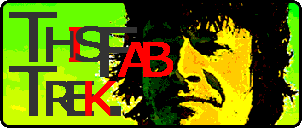



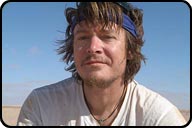
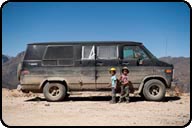


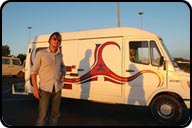
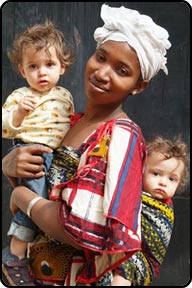
 contains Festival/Fiesta/Art photography.
contains Festival/Fiesta/Art photography.
